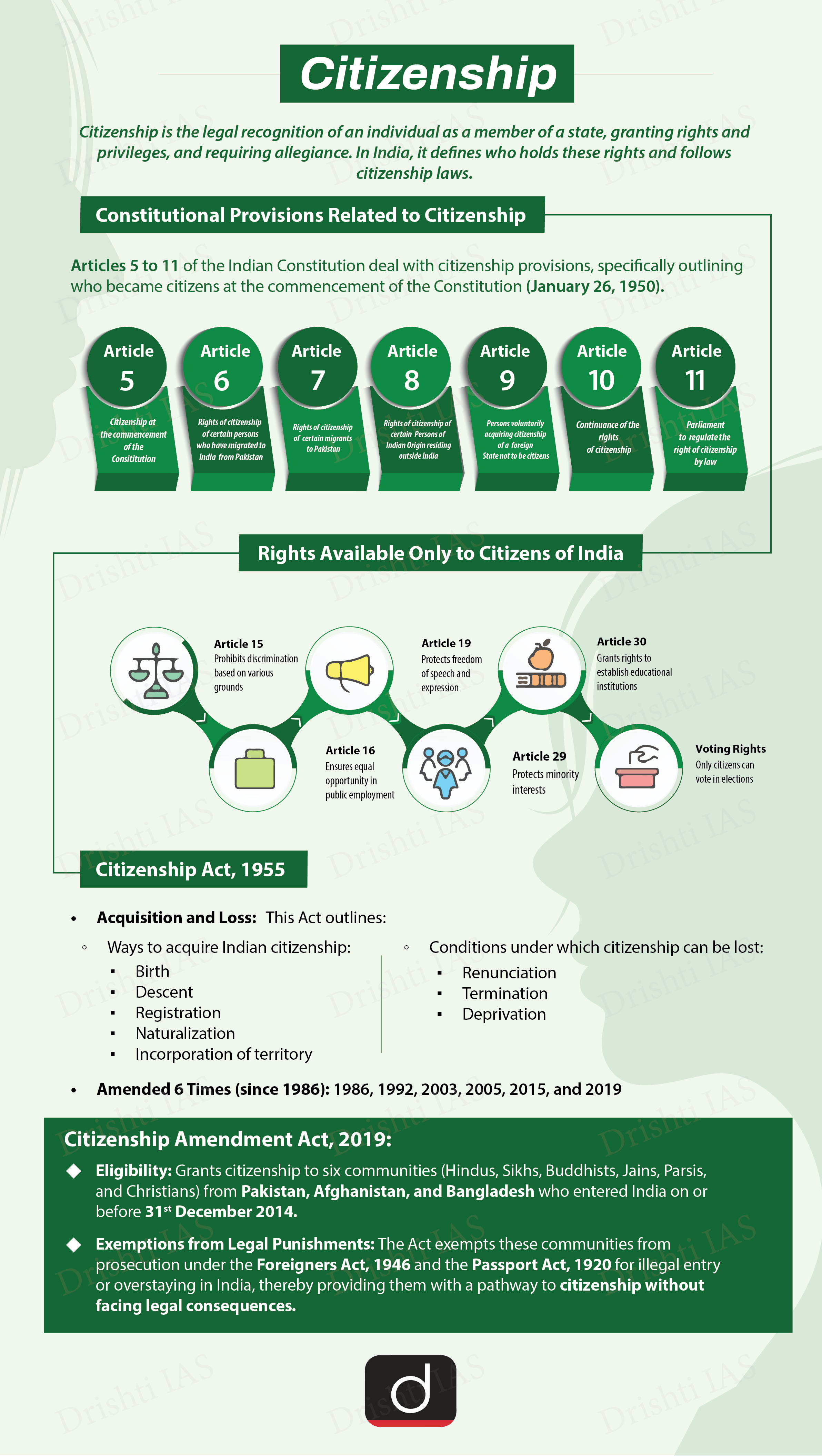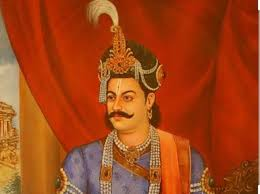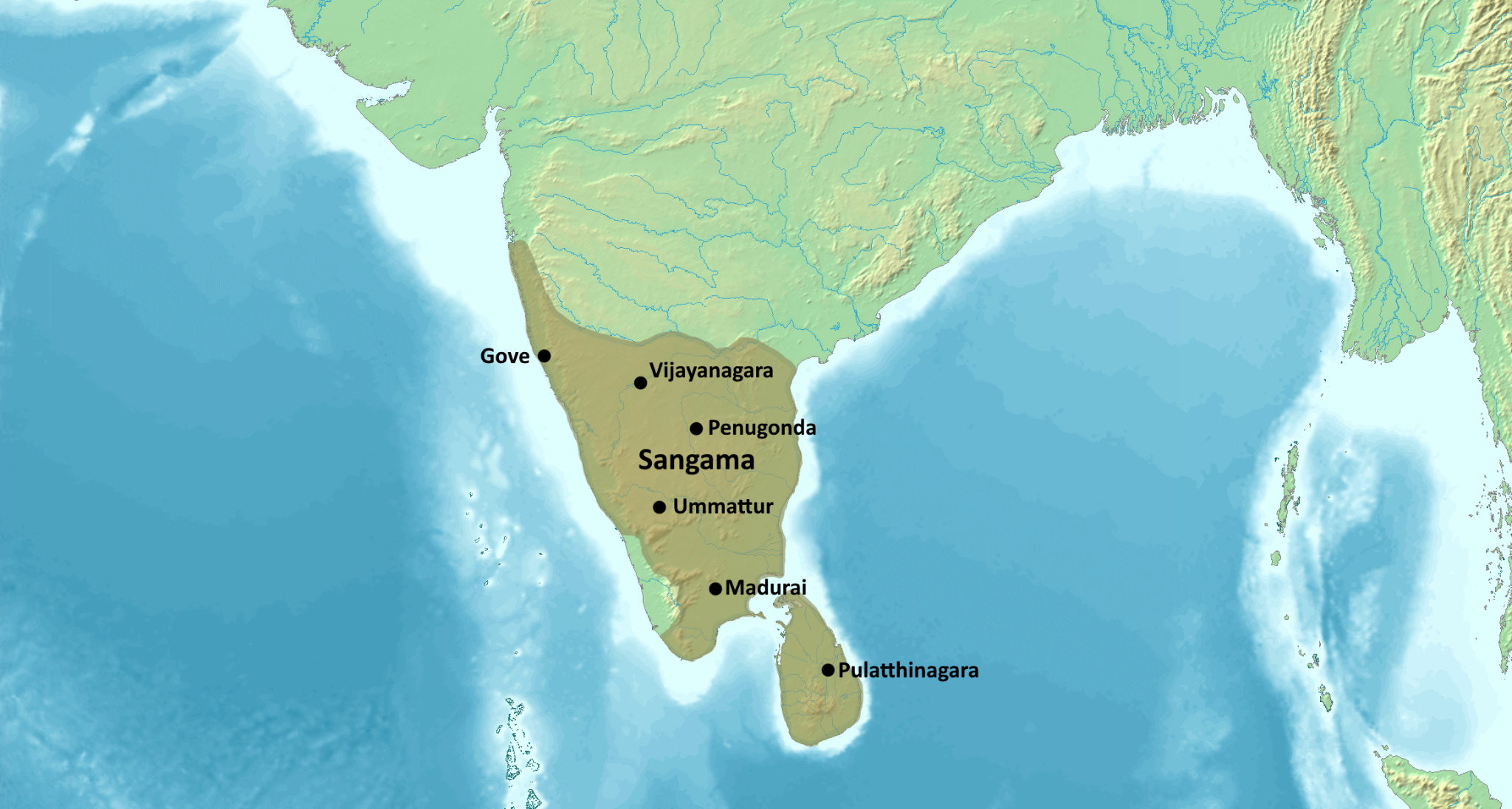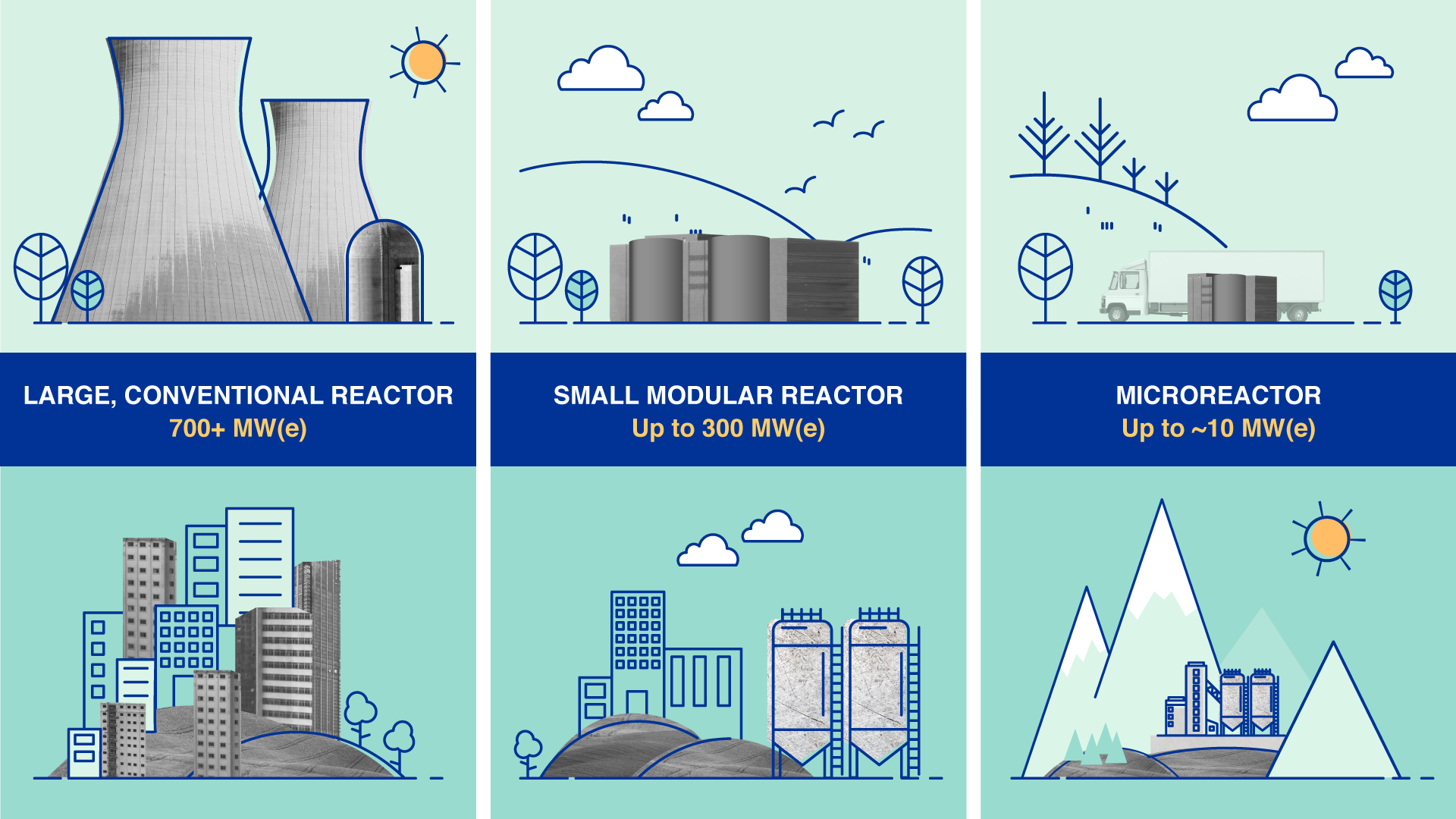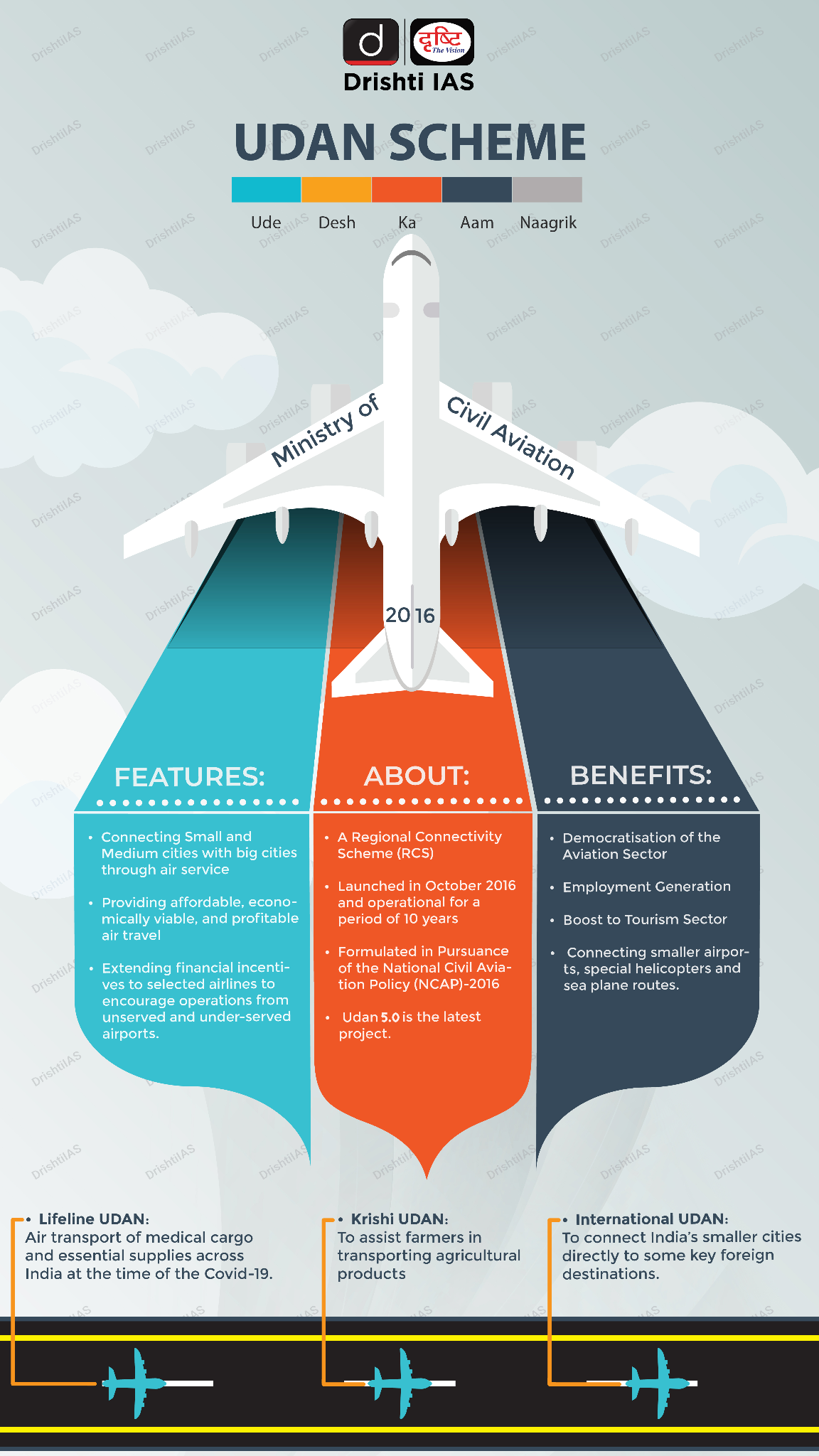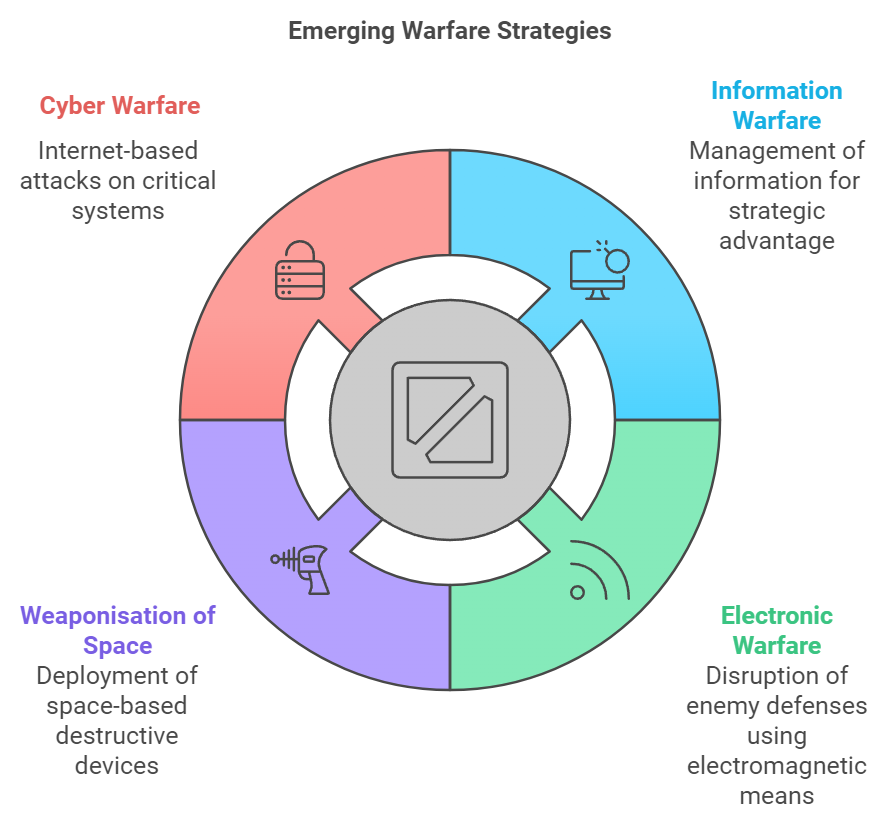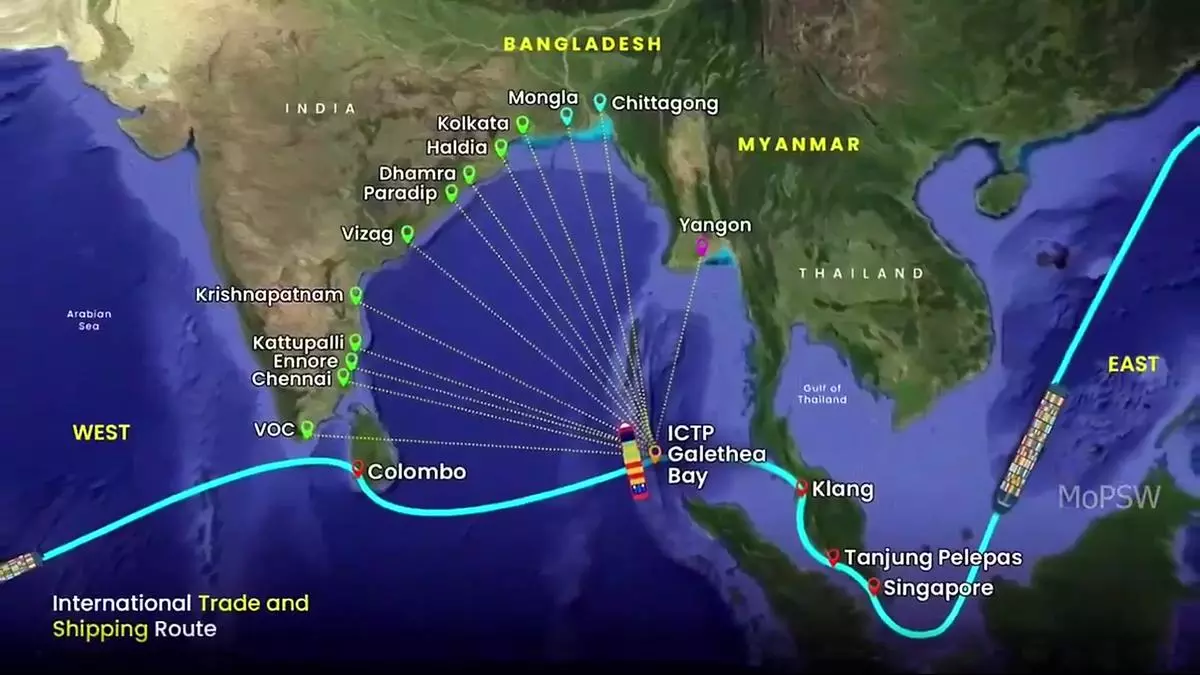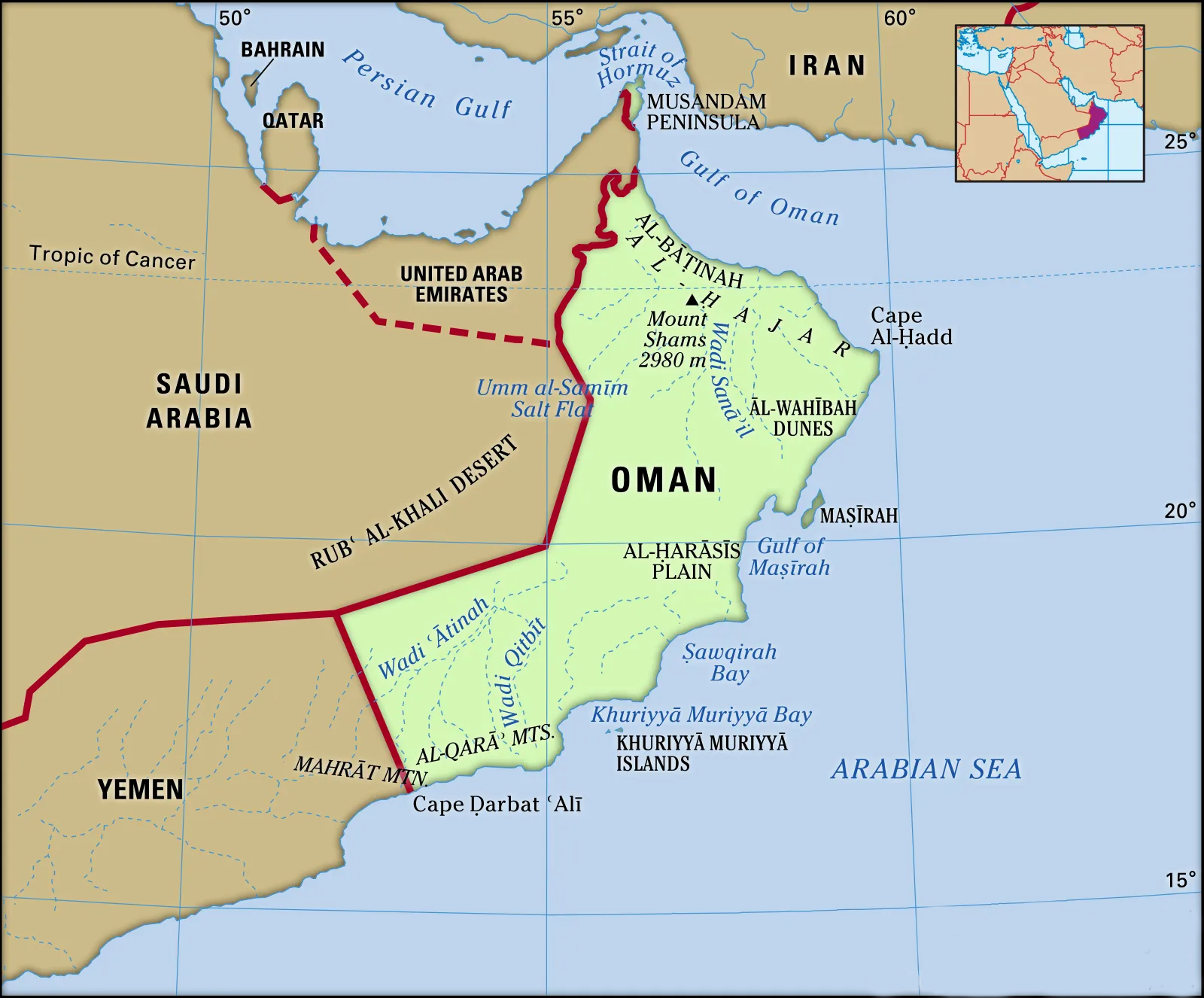Infographics
Indian Polity
Socialist and Secular as Integral Part of Constitution
For Prelims: Supreme Court, Socialist, Secular, Basic Structure, 42nd Amendment, 1976, Preamble, Constituent Assembly, Representation of People Act, 1951, Freedom of Speech, Mixed Economy, Planned Economy, Liberalisation, Articles 25 and 26, Articles 25-28, Right to Life, Fundamental Rights, Directive Principles of State Policy (DPSP), Article 31C.
For Mains: Equitable Distribution of Resources, Significance of the terms socialist and secular in the Indian Constitution, Judicial interpretation related to terms socialist and secular.
Why in News?
Recently, the Supreme Court affirmed that "socialist" and "secular" are integral to the Constitution's Basic Structure, rejecting a petition to remove these terms from the Preamble.
- The Supreme Court upheld the 42nd Amendment, 1976 which introduced the terms socialist and secular saying that these terms hold specific significance in the Indian context, distinct from their Western interpretations.
What Arguments were Presented for Removal of Terms Socialist and Secular?
- Rejection by Constituent Assembly: On 15th November 1948, Professor KT Shah proposed including secular and socialist in the Preamble, but the assembly rejected the proposal.
- Further attempts to insert the term “secular” into Article 18 of the Constitution were similarly dismissed by the Constituent Assembly.
- Preamble's Amendment Date: A petitioner claimed the inclusion of socialist and secular terms in the 42nd Constitutional Amendment Act, 1976 was unconstitutional because of the fixed adoption date of 26th November, 1949 and amendments were made in 1976 with retrospective effect.
- However, the Court recognised the Constitution as a living document that evolves with societal needs, noting that the inclusion of socialist and secular reflects this evolution.
- 1989 Amendment to the Representation of People Act: The petitioners challenged the 1989 amendment to the Representation of People Act (RPA), 1951 arguing that requiring political parties to pledge allegiance to socialism and secularism for registration infringes on their freedom of speech under Article 19(1)(a).
How Western Concept of Secularism Different from Indian Concept?
| Aspect | Western Concept of Secularism | Indian Concept of Secularism |
| Definition | Primarily refers to the strict separation of religion from state affairs. | No strict separation between state and religion. Emphasises equal respect for all religions and the state's positive role in promoting religious harmony. E.g., Temple entry and Criminalising triple talaq |
| Role of Religion | Religion is often seen as a private matter, and the state remains neutral. | The state recognises and accommodates multiple religions, promoting their coexistence. |
| Government's Obligation | The government has no obligation to endorse or support any religion. | The government is expected to treat all religions equally and ensure their fair respect in society. |
| Individualism Vs Collectivism | Focus on individual rights to practise religion freely without state interference. | Focus on collective rights of religious communities and ensuring their cultural and religious practices are protected. |
| Cultural Context | Often developed in societies with a history of religious conflict, emphasising neutrality. | Developed in a pluralistic society with a long history of coexistence among various religions. |
| Educational Institutions | Public schools are typically secular, prohibiting religious instruction. | Schools may incorporate religious education, reflecting the cultural diversity of the community. |
How Western Concept of Socialism is Different from Indian Concept?
| Aspect | Western Concept of Socialism | Indian Concept of Socialism |
| Main Focus | Advocates for collective or government ownership of the means of production to achieve economic equality. | Emphasises on democratic socialism though equitable distribution of resources while allowing for a mixed economy with both public and private sectors. |
| Economic Structure | It involves an imperative planning model where the state controls key industries, especially in Marxist or Leninist contexts. | It involves an indicative planning model where the state indicates areas of cooperation and the private sector also plays a significant role in achieving the targets. |
| Class Struggle | Focuses on the conflict between classes (proletariat vs. bourgeoisie) as a driver for social change and revolution. Capitalists and socialists consider each other as their enemy. | Emphasises social justice and upliftment of marginalised communities without necessarily advocating for class struggle. |
| Role of the State | The state often plays a central role in economic planning and resource allocation, especially in more radical forms of socialism. | The state has a regulatory role and implements welfare schemes, while encouraging private enterprise and liberalisation. |
| Cultural Context | Developed in response to industrial capitalism and urbanisation in the West, often rooted in Marxist theory. | Evolved from the context of colonialism, independence, and the need to address deep social inequalities and diverse cultural identities. |
| Globalization and Trade | May be critical of globalisation, viewing it as a form of capitalist exploitation. | Generally supportive of globalisation, recognizing the need for India to engage with global markets while ensuring social welfare. |
What is the Role of Indian Judiciary in Shaping Secularism?
- Sardar Taheruddin Syedna Sahib Case 1962: The Supreme Court asserted that Articles 25 and 26 (freedom of religion) of the Constitution highlight the secular nature of Indian democracy.
- Kesavananda Bharati Case 1973: The Supreme Court held that secularism was a part of the basic structure of the Constitution.
- The basic structure doctrine posits that certain core elements of the Indian Constitution have intrinsic value and cannot be altered or removed.
- SR Bommai Case, 1994: The Court stated that secularism signifies equal treatment of all religions and noted that the term secular, added to the Preamble by the 42nd Amendment Act, 1976 emphasises the fundamental rights protected under Articles 25-28.
- Ismail Faruqi Case, 1994: The Court held that any property belonging to a religious community could be acquired by the State if deemed necessary after paying fair compensation of the property.
- Aruna Roy Case, 2002: The Supreme Court of India held that the essence of secularism is non-discrimination of people by the State on the basis of religious differences.
- The Court made a distinction between religious instruction and religious education or study of religion and said the latter was permissible, and indeed desirable, while the former was banned.
- Abhiram Singh Case, 2017: The Court held that secularism does not require the State to be aloof from religion; rather, it mandates equal treatment for all religions.
- It acknowledged that religion and caste are integral to society and cannot be entirely separated from politics.
- A political candidate or their agent cannot appeal to religion, race, caste, community, or language during elections, as it is considered a corrupt practice (Section 123(3) of RPA).
What is the Role of Indian Judiciary in Shaping Socialism?
- Kesavananda Bharati Case, 1973: The Supreme Court ruled that socialism is a fundamental aspect of the Constitution's basic structure, reinforcing its role in promoting social justice and equality.
- State of Karnataka vs Sri Ranganatha Reddy Case, 1977: The Court emphasised that socialism must focus on social good, arguing that nationalisation or acquisition should aim for the common good and equitable wealth distribution.
- Maneka Gandhi Case, 1978: The judgement emphasised that the right to life includes the right to live with dignity, which is essential to the socialist principle of ensuring a fair quality of life for all citizens.
- Minerva Mills Case, 1980: The Supreme Court emphasised the need to harmonise Fundamental Rights with the Directive Principles of State Policy (DPSP), stating that the DPSP should guide state policies to secure social and economic justice in line with socialist principles.
- Sanjeev Coke Manufacturing Company vs Bharat Coking Coal Ltd Case 1982: The judgement framed nationalisation as a necessary step for reorganising the coal industry and safeguarding resources vital for public welfare.
- It noted that even if there was a violation of Article 14, Article 31C would protect legislation.
- Article 31C protects laws enacted to ensure the “material resources of the community” are distributed to serve the common good (Article 39(b)) and that wealth and the means of production are not “concentrated” to the “common detriment” (Article 39(c)).
Conclusion
The Supreme Court's affirmation of "socialist" and "secular" as integral to the Constitution's Basic Structure reflects the judiciary's role in interpreting these concepts in the Indian context. The distinctions from Western interpretations highlight the unique socio-cultural landscape of India, emphasising inclusivity, social justice, and equitable resource distribution.
|
Drishti Mains Question: How do terms socialist and secular in the Indian Constitution evolved over time and how do they differ from their Western interpretations? |
UPSC Civil Services Examination Previous Year Questions (PYQ)
Prelims:
Q.What was the exact constitutional status of India on 26th January, 1950? (2021)
(a) A Democratic Republic
(b) A Sovereign Democratic Republic
(c) A Sovereign Secular Democratic Republic
(d) A Sovereign Socialist Secular Democratic Republic
Ans: (b)
Q. The Preamble to the Constitution of India is (2020)
(a) a part of the Constitution but has no legal effect
(b) not a part of the Constitution and has no legal effect either
(c) a part of the Constitution and has the same legal effect as any other part
(d) a part of the Constitution but has no legal effect independently of other parts
Ans: (d)
Q. Who among the following were the founders of the “Hind Mazdoor Sabha” established in 1948? (2018)
(a) B. Krishna Pillai, E.M.S. Namboodiripad and K.C. George
(b) Jayaprakash Narayan, Deen Dayal Upadhyay and M.N. Roy
(c) C.P. Ramaswamy Iyer, K. Kamaraj and Veeresalingam Pantulu
(d) Ashok Mehta, T.S. Ramanujam and G.G. Mehta
Ans: (d)
Q. Consider the following statements: (2010)
- The “Bombay Manifesto” signed in 1936 openly opposed the preaching of socialist ideals.
- It evoked support from a large section of the business community from all across India.
Which of the statements given above is/are correct?
(a) 1 only
(b) 2 only
(c) Both 1 and 2
(d) Neither 1 nor 2
Ans: (a)
Mains:
Q. Discuss each adjective attached to the word ‘Republic’ in the ‘Preamble’. Are they defendable in the present circumstances? (2016)

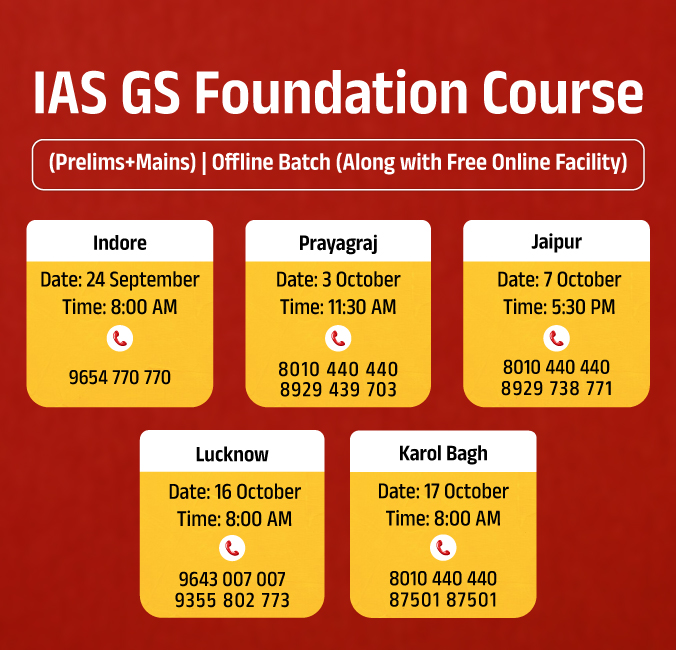
Indian History
Copper Plates Discovered from Vijayanagara Kingdom
For Prelims: Vijayanagara Kingdom, Archaeological Survey of India (ASI), King Krishandevaraya, Hampi, World Heritage site by UNESCO, Hazara Rama temple,Ugra Narasimha idol.
For Mains: Cultural and litreary developments during Vijayanagara Empire, Literary Contributions of Krishnadevaraya.
Why in News?
Recently, a collection of copper plate inscriptions featuring two leaves from the 16th Century CE was discovered at the Sri Singeeswarar temple in Mappedu village, Tiruvallur district of Tamil Nadu.
- The two leaves of the copper plates strung together using a ring featuring the seal of the Vijayanagara Kingdom.
- The inscription, donating a village to Brahmins by the Raja of Chandragiri, is written in Sanskrit and the Nandinagari script. It was engraved in 1513 during the reign of King Krishnadevaraya.
Who was King Krishandevaraya?
- Reign of Krishnadevaraya:
- The Kingdom of Vijayanagar was ruled by Krishnadevaraya from 1509 to 1529 AD.
- After Krishna Deva Raya, Achyuta Raya took over in 1530, followed by Sada Siva Raya in 1542.
- He was known by various titles, including “Kannadaraya” and “Kannada Rajya Ramaramana.”
- He is regarded as one of the greatest statesmen in Indian history and is considered one of the most significant rulers of mediaeval South India.
- The Kingdom of Vijayanagar was ruled by Krishnadevaraya from 1509 to 1529 AD.
- Literary Contributions:
- He was an eminent scholar and authored works such as Madalasa Charita, Satyavedu Parinaya, Rasamanjari, Jambavati Kalyana, and Amuktamalkyada.
- Fluent in multiple languages, he supported poets writing in Sanskrit, Telugu, Tamil, and Kannada.
- Patronage of Learning and Literature:
- His court included the Ashtadiggajas, eight prominent scholars, among them Allasani Peddana, known as the Andhra-kavitapitamaha, famous for his work Manucharitamu.
- Kannada poet Thimmanna completed the Kannada Mahabharatha, originally started by Kumara Vyasa, at Krishnadevaraya's request.
- Other notable poets patronised during his reign.
- Kannada poet Mallanarya, author of Veerasaivamrita and Bhavachintaratna.
- Chatu Vittalanatha, who wrote Bhagvatha.
- Timmanna Kavi, is known for his eulogy Krishnaraya Bharata.
- Peddanna, a Telugu poet, was honoured for his proficiency in Telugu and Sanskrit.
- Cultural Development:
- Krishnadevaraya played a significant role in nurturing the Carnatic musical tradition.
- He also encouraged classical dance forms, including Bharatanatyam and Kuchipudi.
- Infrastructural Development:
- He is credited with building some fine temples and adding impressive gopurams to many important south Indian temples.
- He also founded a suburban township near Vijayanagar called Nagalapuram after his mother.
What are the Key Facts of the Vijaynagar Empire?
- Foundation and Duration of the Empire:
- The Vijayanagara Empire was established in the Deccan region from 1336 onwards, founded by Harihara (also known as Hakka) and his brother Bukka Raya.
- They made Hampi the capital city (declared a World Heritage site by UNESCO in 1986).
- Vijayanagar Empire was ruled by four important dynasties (Sangama, Saluva, Tuluva, Aravidu).
- The empire lasted from 1336 until around 1660, although it faced a gradual decline in its final century following a devastating defeat by an alliance of deccan sultanates, leading to the capital being captured, looted, and destroyed.
- The Vijayanagara Empire was established in the Deccan region from 1336 onwards, founded by Harihara (also known as Hakka) and his brother Bukka Raya.
- Portuguese Relations:
- Around 1510, the Portuguese captured Goa, which had been under the Sultan of Bijapur, with the support of Vijayanagara.
- The Portuguese supplied the Vijayanagara Empire with guns and Arabian horses, while the empire exported cotton, rice, sugar, spices, indigo, and wooden goods.
- Cultural and Architectural Flourishing:
- The empire is generally regarded as reaching its zenith during the reign of Krishna Deva Raya, who conquered territories east of the Deccan that were formerly part of Orissa.
- Many of the empire's notable monuments, including the Hazara Rama temple, Krishna temple, and Ugra Narasimha idol, date back to his time.
- Vijayanagara rulers promoted the construction of grand temples, such as the Virupaksha Temple and Vittala Temple, known for their intricate carvings and stunning architecture.
- Dominance in Southern India:
- Over two centuries, the Vijayanagara Empire dominated southern India and was the strongest power in the Indian subcontinent during this period.
- The empire served as a defense against invasions from the Turkic Sultanates of the Indo-Gangetic Plain.
- Tussle with the Deccan Sultanates and Mughals:
- The foundation of the Vijayanagara Empire was partly in response to the weakening of the Delhi Sultanate under Muhammad bin Tughlaq, whose policies led to unrest in the Deccan.
- His attempt to shift his capital from Delhi to Daulatabad and his harsh taxation policies caused revolts, contributing to the rise of independent regional states, including Vijayanagara.
- The empire frequently clashed with the Bahmani Sultanate, which had emerged after the collapse of Tughlaq's control in the Deccan.
- Territorial conflicts with the Deccan Sultanates, particularly over the Raichur Doab, were driven by competition for strategic and economic resources rather than purely religious differences.
- The foundation of the Vijayanagara Empire was partly in response to the weakening of the Delhi Sultanate under Muhammad bin Tughlaq, whose policies led to unrest in the Deccan.
- Area of Rule under Vijayanagar:
- At its peak, the Empire covered a vast area across southern India, including parts of present-day Karnataka, Andhra Pradesh, Tamil Nadu, Kerala, and Telangana.
- It extended from the Krishna River in the north to the southernmost tip of the Indian Peninsula, and from the Arabian Sea on the west to the Bay of Bengal on the east.
- Decline and Fall:
- In 1565, the Battle of Talikota (Battle of Rakkasagi–Tangadagi) resulted in a decisive defeat for the Vijayanagara army by the allied Deccan sultanates.
Nayakas
- The Nayakas were military commanders who were granted land (amaram) by the king in return for maintaining troops and financial contributions.
- They held substantial autonomy in their territories, managing local administration and defense while remaining loyal to the central authority.
- The Nayakas were responsible for local governance, including land distribution and tax collection, creating a feudal-like system.
- Over time, some Nayakas gained significant power, leading to conflicts with the central authority, especially during the decline of the empire.
|
Drishti Mains Question: Discuss the socio-economic and cultural contributions of the Vijayanagara Empire to southern India. How did these contributions influence subsequent Indian history? |
UPSC Civil Services Examination, Previous Year Question (PYQ)
Prelims:
Q. Where is the famous Virupaksha temple located? (2009)
(a) Bhadrachalam
(b) Chidambaram
(c) Hampi
(d) Srikalahasti
Ans: (c)
Mains:
Q. Krishnadeva Raya, the king of Vijayanagar, was not only an accomplished scholar himself but was also a great patron of learning and literature. Discuss. (2016)


Economy
Shift of Tech Giants Towards Nuclear Energy
For Prelims: Small Modular Reactors (SMRs), Startup Oklo, Wind and Solar Energy, Carbon Footprints, Greenhouse Gas Emissions, Nuclear Power, Rural Electrification Corporation, Nuclear Power Corporation of India, Nuclear Fission, Bharat Small Modular Reactor, Uranium, Chernobyl Disaster (1986), Fukushima Accident (2011), Nuclear Waste.
For Mains: Growing significance of nuclear energy for meeting energy needs and climate goals.
Why in News?
Recently, some big tech companies including Google signed agreements to purchase nuclear energy to meet rising electricity demands for Artificial Intelligence data centres.
Which Big Tech Companies Investing in Nuclear Energy?
- Google: Google has entered into a corporate agreement to purchase nuclear energy from multiple Small Modular Reactors (SMRs) being developed by Kairos Power.
- It will provide 500 MW of carbon-free power for development of AI technologies.
- Microsoft: Microsoft signed a 20-year power purchase agreement with Constellation Energy to restart the Three Mile Island nuclear power plant in the US.
- It will provide approximately 835 MW of carbon-free energy, supporting Microsoft's goal of becoming carbon negative.
- Amazon: Amazon has formed three agreements to support nuclear energy. It includes, partnership with Energy Northwest for SMRs in Washington, investing in SMR development with X-energy, and collaborating with Dominion Energy in Virginia.
- OpenAI: OpenAI CEO Sam Altman has backed the nuclear startup Oklo, aiming for operational status by 2027.
- Altman also invested in Helion, a nuclear fusion company, in 2021.
Why Are Big Tech Companies Shifting to Nuclear Energy?
- Increasing Energy Demands from AI: The Electric Power Research Institute (EPRI), a non-profit organisation, highlighted that data centres' electricity consumption could more than double by 2030.
- Data centres, which are critical for AI operations, are projected to consume up to 9% of the United States' electricity by 2030, more than double their current usage.
- Limitations of Renewable Energy: Nuclear energy provides continuous and carbon-free power around the clock as AI companies scale their operations.
- Sustainability: Major tech companies are increasingly focused on reducing their carbon footprints and achieving sustainability goals.
- E.g., Google reported a 13% rise in global greenhouse gas emissions in 2023, highlighting the challenges of balancing growth with sustainability.
- Strategic Partnerships and Investments: Tech giants are forging strategic partnerships with energy companies to invest in nuclear power projects.
- E.g., Microsoft partnered with Constellation Energy to revitalise the Three Mile Island nuclear plant in the US for securing long-term carbon-free energy.
- Potential for Economic Advantage: Investing in nuclear power now enables tech firms to secure a reliable energy source, which will be increasingly valuable as energy competition intensifies.
- Climate Change Concern: Concerns about climate change and energy reliability make nuclear power more appealing, prompting tech companies to justify their investments in this sector.
What is the Nuclear Energy Scenario in India?
- India aims to triple its nuclear power capacity to 22,480 MW by 2032, with a goal of deriving 25% of its electricity from nuclear sources by 2050.
- REC (Rural Electrification Corporation) plans to allocate Rs 6 trillion to renewable and nuclear projects by 2030.
- NTPC is partnering with NPCIL (Nuclear Power Corporation of India) to form Anushakti Vidhyut Nigam, focusing on building and operating nuclear power plants.
- India plans to establish 10 new reactors and collaborate with private players to explore SMRs and innovate in nuclear technologies.
What are Key Points about Small Modular Reactors (SMRs)?
- About: SMRs are advanced nuclear reactors that are about one-third the size of traditional nuclear reactors.
- Small Size (S): Power capacity of up to 300 MW(e).
- Modular (M): Components are prefabricated and transported to the installation site.
- Nuclear Reactors (R): Use nuclear fission to generate low-carbon electricity.
- Advantages:
- Smaller Footprint: SMRs can be installed in locations unsuitable for larger reactors.
- Cost and Construction Efficiency: Prefabrication and modular design reduce construction time and costs.
- Off-Grid Potential: SMRs, especially microreactors (up to 10 MW), can provide power in remote areas.
- Reduced Refuelling Frequency: SMRs may only need refuelling every 3 to 7 years, with some designs lasting up to 30 years without refuelling.
- Global Adoption: Russia’s floating SMR power plant, the Akademik Lomonosov, began commercial operation in 2020.
- India aims to deploy 40-50 SMRs named Bharat Small Modular Reactor to replace captive thermal power plants
- Other countries like Argentina, Canada, China, South Korea, and the U.S. are also advancing SMR projects.
- More than 80 commercial SMR designs are being developed globally for various applications, including electricity generation, heating, water desalination, and industrial steam.
- Challenges: Although SMRs have a lower upfront capital cost per unit, their economic competitiveness still needs to be proven in real-world deployments.
What are Advantages of Nuclear Energy?
- Low-Carbon Solution: Nuclear energy is a reliable and consistent source of power that is not affected by weather conditions, making it suitable for meeting energy demands continuously.
- Small Land Footprint: Nuclear facilities occupy significantly less land compared to other renewable energy sources.
- A typical 1,000 MW nuclear plant requires only about one square mile, whereas wind farms and solar plants need 360 and 75 times more land, respectively.
- High Power Output: Nuclear power plants have a high capacity factor, producing maximum output approximately 93% of the time.
- Minimal Waste Production: Nuclear energy produces relatively small amounts of waste compared to other energy sources.
- Advanced reactor designs are being developed that can utilise used fuel, potentially reducing waste even further.
What Concerns are Associated with Nuclear Energy?
- Carbon Dioxide Emissions: Nuclear power reactors themselves do not produce direct carbon dioxide emissions during operation but the processes of mining and refining uranium ore, as well as constructing nuclear power plants, require significant energy sourced from fossil fuels.
- Reputation Issues: Nuclear energy is often linked to nuclear weapons, which contributes to public fears about proliferation and security risks.
- Safety Concerns: High-profile accidents, such as Three Mile Island Incident (1979), Chernobyl Disaster (1986) and Fukushima Accident (2011) have instilled fear about the safety of nuclear power plants, leading to widespread scepticism about their safety.
- Environmental groups, such as 'Friends of the Earth,' have criticised nuclear energy highlighting issues like accidents, radioactive leaks, and the challenges of nuclear waste management.
- Cost and Financial Viability: Nuclear power is often associated with high initial construction and operational costs, making it less appealing compared to alternative energy sources.
Way Forward
- Enhancing Safety Protocols: Adopt advanced reactor designs, such as Generation IV reactors and Small Modular Reactors (SMRs), which prioritise safety and efficiency.
- Innovative Waste Management: Invest in advanced nuclear waste management solutions, such as deep geological storage, which has been successfully implemented in countries like Finland.
- Integration with Renewables: Promote nuclear energy as a complementary resource to intermittent renewable sources, enhancing overall grid stability and energy security.
- Regulatory Improvements: Implement stringent regulatory frameworks and international safety standards to restore public confidence in nuclear facilities.
|
Drishti Mains Question: Small Modular Reactors (SMRs) are being hailed as the future of nuclear energy for their adaptability and efficiency." Critically examine. |
UPSC Civil Services Examination, Previous Year Questions (PYQs)
Prelims
Q.The function of heavy water in a nuclear reactor is to (2011)
(a) Slow down the speed of neutrons
(b) Increase the speed of neutrons
(c) Cool down the reactor
(d) Stop the nuclear reaction
Ans: (a)
Mains
Q. With growing energy needs should India keep on expanding its nuclear energy programme? Discuss the facts and fears associated with nuclear energy. (2018)


Important Facts For Prelims
Excluded Sports From Commonwealth Games 2026
Why in News?
In the Commonwealth Games (CWG) 2026 Glasgow, six of the 12 sports in which India won medals at the 2022 Commonwealth Games have been excluded.
- The games that are excluded are Badminton, cricket, hockey, squash, table tennis, and wrestling.
- India strongly protested the exclusion of key sports from the Glasgow Games, as they are India's top-performing events.
What are the Recent Developments Related to CWG 2026?
- About:
- The 23rd edition of the Commonwealth Games will be held in Scotland from 23rd July to 2nd August 2026, marking a return to the city 12 years after the 2014 Games.
- Excluded Games:
- Hockey:
- Hockey has been part of the CWG since 1998, with India ranked as the second-best team in CWG history, securing six medals: one gold, four silver, and one bronze for both men’s and women’s teams.
- In the Birmingham 2022 edition, the Indian men's team finished second, while the women’s team earned a bronze.
- Wrestling:
- India has historically excelled in wrestling, with 114 medals to date, including 49 gold, 39 silver, and 26 bronze.
- In the Birmingham CWG, the country won 12 medals in wrestling, including six gold.
- Badminton:
- India achieved six medals in badminton at the Birmingham Games, comprising three golds
- Table Tennis:
- Introduced in the CWG in 2002, India has won medals in table tennis at every edition, totaling 20 medals.
- Squash and Cricket:
- They were included at the 1998 CWG, in Kuala Lumpur (Malaysia).
- Hockey:
- Reason for Exclusion:
- The exclusion of certain sports from the CWG 2026 is due to budget limitations.
- Victoria (Australia), withdrew from hosting due to high costs, and Glasgow, now hosting on a tight budget, has reduced the Games to four venues.
What are the Key Facts Related to CWG?
- It is a quadrennial international multisport event contested by athletes from the Commonwealth of Nations.
- It is managed by the Commonwealth Games Federation (CGF).
- It is the organisation responsible for the direction and control of the Commonwealth Games and Commonwealth Youth Games.
- It is an organisation headquartered and incorporated in the UK, but working across 72 member nations and territories.
- The first Commonwealth Games were held in Hamilton, Ontario, Canada in August 1930.
Commonwealth
- The Commonwealth of Nations is a group of 56 countries composed mostly of former British colonies.
- It was established by the London Declaration in 1949.
- While members of the Commonwealth are predominantly located in Africa, the Americas, Asia, and the Pacific, with many of them emerging economies, the three European members of the group are Cyprus, Malta, and the U.K.
- The developed nations of the Commonwealth are Australia, Canada, and New Zealand.
UPSC Civil Services Examination, Previous Year Question (PYQ)
Q. Consider the following statements: (2010)
- The Commonwealth has no charter, treaty or constitution.
- All the territories/countries once under the British empire (jurisdiction/rule/mandate) automatically joined the Commonwealth as its members.
Which of the statements given above is/are correct?
(a) 1 only
(b) 2 only
(c) Both 1 and 2
(d) Neither 1 nor 2
Ans: (a)

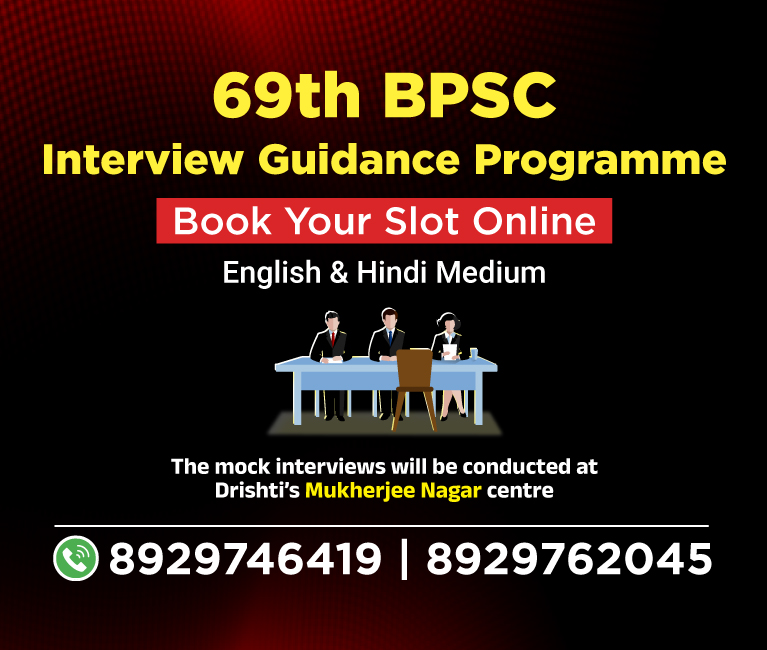
Important Facts For Prelims
New Airports Under RCS-UDAN
Why in News?
Recently, the Prime Minister inaugurated three airports under the Regional Connectivity Scheme (RCS-UDAN) in Rewa (Madhya Pradesh), Ambikapur (Chhattisgarh), and Saharanpur (Uttar Pradesh).
- These airports aim to enhance air travel accessibility and will soon commence flights, furthering the mission of improving infrastructure in underserved regions.
What is the Regional Connectivity Scheme (RCS-UDAN)?
- About: Ude Desh Ka Aam Naagrik (UDAN) was launched as a Regional Connectivity Scheme (RCS) under the Ministry of Civil Aviation in 2016.
- The scheme connects remote areas, promoting tourism and economic growth, and has facilitated over 144 lakh passenger travels in its seven years.
- It supports last-mile connectivity and addresses unserved air routes.
- The first RCS-UDAN flight was inaugurated by the Prime Minister in 2017, connecting Shimla to Delhi.
- The scheme connects remote areas, promoting tourism and economic growth, and has facilitated over 144 lakh passenger travels in its seven years.
- Versions of UDAN:
- UDAN 1.0: Awarded 128 flight routes to connect 70 airports (36 newly operational).
- UDAN 2.0: Inclusion of helipads for the first time.
- UDAN 3.0: Introduce seaplanes for water aerodromes, enhancing connectivity in the North-East Region.
- UDAN 4.0: Focused on North-Eastern regions, hilly states, and islands, facilitating operations for helicopters and seaplanes.
- UDAN 5.0: Prioritises Category-2 and Category-3 aircraft.
- UDAN 5.1: Boosts helicopter routes by increasing funding, lowering airfare caps, and requiring one destination to be a priority area.
- UDAN 5.2: Enhances last-mile connectivity with small aircraft, boosting tourism in remote areas.
- UDAN 5.3 and 5.4: To operationalize previously discontinued routes, further enhancing point-to-point air connectivity.
Other Major Initiatives for Aviation Sector
- National Civil Aviation Policy (NCAP): The NCAP seeks to make flying affordable and accessible, foster civil aviation growth, promote tourism and employment, enhance regional connectivity through fiscal support and infrastructure, and improve business ease via deregulation and e-governance.
- Open Sky Agreement: The bilateral agreements between two countries negotiating to provide rights for airlines to offer international passenger and cargo services.
- Digi Yatra for Seamless Travel: This digital platform facilitates a contactless experience for air travellers, with features like facial recognition and paperless check-in.
UPSC Civil Services Examination, Previous Year Questions (PYQs)
Prelims
Q1. With reference to ‘National Investment and Infrastructure Fund’, which of the following statements is/are correct? (2017)
- It is an organ of NITI Aayog.
- It has a corpus of `4,00,000 crore at present.
Select the correct answer using the code given below:
(a) 1 only
(b) 2 only
(c) Both 1 and 2
(d) Neither 1 nor 2
Ans: (d)


Important Facts For Prelims
Marine Heat Waves and Twilight Zone
Why in News?
Recently, in a study researchers investigated Marine Heatwaves (MHWs) and cold spells within the largely underexplored twilight zone of the ocean.
- A cold spell refers to a period of unusually cold weather, often lasting several days or longer.
Marine Heat Waves (MHWs)
- An MHW is an extreme weather event. It occurs when the surface temperature of a particular region of the sea rises to 3 or 4 degree Celsius above the average temperature for at least five days. MHWs can last for weeks, months or even years.
- These events are linked to coral bleaching, seagrass destruction, and loss of kelp forests, affecting the fisheries sector adversely.
- The most common drivers of marine heatwaves include ocean currents which can build up areas of warm water and air-sea heat flux or warming through the ocean surface from the atmosphere.
- Winds can enhance or suppress the warming in a marine heatwave, and climate modes like El Niño can change the likelihood of events occurring in certain regions.
What are Key Findings Related to MHWs?
- Marine heatwaves (MHWs) occurring in the deep ocean are under-reported.
- To monitor temperature changes at great depths, specialized buoys suspended in the ocean were deployed globally for extended data collection.
- Argo floats, robotic devices that can dive to 2,000 meters and resurface, were used to gather crucial temperature and salinity data.
- Global warming is affecting surface ocean temperatures, while the impact on deep ocean waters reveals the deeper, less understood consequences of climate change on oceanic ecosystems.
- Unlike surface-level marine heatwaves, atmospheric factors do not influence temperature changes in the deep ocean.
- Instead, eddy currents, which are large, swirling loops of water that can extend hundreds of kilometers and reach depths over 1,000 meters, play a crucial role in transporting warm or cold water across vast distances.
- The overall ocean warming is leading to stronger eddy currents, amplifying these extreme temperature changes.
- MHW impact on Biodiversity:
- Extreme temperature shifts in the twilight zone are alarming due to the presence of many fish species and plankton, which are vital to the oceanic food chain and serve as a key food source for small fish.
- MHW can reduce oxygen levels and deplete nutrients in the water, endangering marine life and the balance of the ecosystem.
Twilight Zone in the Ocean
- The twilight zone, also known as the mesopelagic or dysphotic zone, is a layer of the ocean that extends from 200 to 1,000 meters below the ocean's surface.
- It is a vast ecosystem inhabited by extraordinary creatures, including organisms that live in darkness and those that migrate to and from the surface.
- It plays a vital role in the ocean's ability to absorb and store carbon dioxide from the atmosphere. This region also hosts the largest animal migration on Earth.
- Organisms in the twilight zone have adapted in several ways, including bioluminescence (used for camouflage) and large mouths (help maximize rare encounters with prey in the dark).
Eddy Currents
- An eddy current in the ocean is a small, circular water current that detaches from the main current and moves independently.
- They are formed when segments of a current pinch off, similar to small whirlpools seen in rivers while canoeing.
- Eddies can span hundreds of kilometers and extend to depths exceeding 1,000 meters. They can be detected from space using infrared sensors.
- They are responsible for several developments.
- Cold-core eddies trap nutrient-rich water and transport it along with plankton.
- Eddies can create swirling patterns in phytoplankton blooms.
- It can displace warm surface water downward or lift cold water upward, leading to rapid temperature changes.
- Cold-core eddies trap nutrient-rich water and transport it along with plankton.
UPSC Civil Services Examination, Previous Year Question (PYQ)
Q. With reference to Ocean Mean Temperature (OMT), which of the following statements is/are correct? (2020)
- OMT is measured up to a depth of 26ºC isotherm which is 129 meters in the south-western Indian Ocean during January-March.
- OMT collected during January-March can be used in assessing whether the amount of rainfall in monsoon will be less or more than a certain long term mean.
Select the correct answer using the code given below:
(a) 1 only
(b) 2 only
(c) Both 1 and 2
(d) Neither 1 nor 2
Ans: (b)


Rapid Fire
Hybrid and Non-Kinetic Warfare
Recently, the Parliamentary Standing Committee on Defence (PSCoD) has emphasised on the Indian armed forces' preparedness for hybrid warfare.
- Hybrid warfare refers to a combination of conventional military tactics (kinetic warfare) and modern strategies such as cyber warfare, information manipulation, economic disruption, and psychological operations (non-kinetic warfare).
- Non-kinetic methods could be deadlier than traditional warfare e.g., pager blasts in Lebanon.
- Non-kinetic warfare includes using jamming, lasers, or electromagnetic waves to disrupt drone operations instead of physically shooting down drones (Kinetic warfare).
- The tri-services “future warfare” course is designed to train officers from Major Generals to Majors (and their equivalents) in modern warfare techniques, both kinetic and non-kinetic.
- It was recently conducted by the Headquarters Integrated Defence Staff.
- The Indian Army is observing 2024 as the Year of Technology Absorption, focusing on integrating disruptive technologies like AI, hypersonic weapons, biotechnology, and quantum technology into existing legacy systems.
- PSCoD is a Departmentally-Related Standing Committees (DRSCs) and functions under Lok Sabha.
- The committee has 31 members—21 from Lok Sabha and 10 from Rajya Sabha. Lok Sabha members are nominated by the Speaker, and Rajya Sabha members by the Chairman.
Read More: Technological Penetration in Indian Army


Rapid Fire
13th Major Port of Galathea Bay
The mega International Container Transshipment Port (ICTP) at Galathea Bay, located on Great Nicobar Island in the Bay of Bengal, has been officially designated as the 13th major port in India. Kamarajar Port located on the Coromandel Coast (Chennai) was named the country’s 12th major port.
- About ICTP at Galathea Bay:
- Strategic Location: The ICTP is along the East-West international trade and shipping route, close to key transshipment hubs such as Singapore, Klang, and Colombo. This location enhances its importance within global trade networks.
- Located just 40 nautical miles from the Malacca Strait, a key shipping route handling 35% of global sea trade, the port has strong potential as a major transshipment hub for cargo from India's east coast, Bangladesh, and Myanmar.
- Economic Advantage: Currently, nearly 75% of India’s transshipped cargo is handled at foreign ports,the ICTP aims to reduce this dependency.
- It could help Indian ports save an estimated USD 200-220 million annually in transshipment charges.
- Strategic Location: The ICTP is along the East-West international trade and shipping route, close to key transshipment hubs such as Singapore, Klang, and Colombo. This location enhances its importance within global trade networks.
- Great Nicobar Island:
- It is the southernmost and largest of the Nicobar Islands. The Andaman and Nicobar Islands consist of 836 islands, divided into two groups: the northern Andaman Islands and the southern Nicobar Islands, separated by the 10° Channel.
Read More: International Container Transhipment Port in Great Nicobar Island


Rapid Fire
Exercise Naseem Al Bahr
Indo-Oman bilateral naval exercise Naseem-Al-Bahr was held in Goa from October 2024. INS Trikand and Dornier Maritime Patrol Aircraft participated with the Royal Navy of Oman Vessel Al Seeb.
- About Naseem Al Bahr: The first exercise was conducted in 1993. It is conducted in two phases.
- Harbour phase: Professional interactions, including expert exchanges and planning meetings, along with sports fixtures and social events.
- Sea phase: Gun firings at surface inflatable targets, close-range anti-aircraft firings, and Replenishment at Sea Approaches (RASAPS).
- Other Exercises between India and Oman:
- Army exercise: Al Najah
- Air Force exercise: Eastern Bridge.
- India and Oman:
- India is the 2nd largest market for Oman’s crude oil exports for the year 2022 after China.
- India is also the 4th largest market for Oman’s non-oil exports for the year 2022 after UAE, US and Saudi Arabia and 2nd largest source of its import after UAE.
- India and Oman are currently engaged in negotiations regarding a trade agreement.
Read More: India-Oman Bilateral Meet


Rapid Fire
Eliminating Kala-azar
India is close to achieving the elimination of Kala-azar as a public health problem, meeting the World Health Organization (WHO) certification criteria.
- To receive WHO certification for eliminating kala-azar, a country must maintain less than one case per 10,000 population at the sub-district level for three consecutive years.
- A country must demonstrate that local transmission has been interrupted for a set period and a system is in place to prevent disease re-emergence.
- India has achieved this for two consecutive years and needs to maintain this level for one more year to qualify for the certification.
- With this, India can become the 2nd country in the world after Bangladesh to eliminate Kala-azar.
- Kala-azar is the second deadliest parasitic disease after malaria in India.
- Kala-azar (visceral leishmaniasis or Black fever) is caused by a protozoan parasite Leishmania donovani and transmitted by the bite of an infected female sandfly.
- If untreated, it is fatal in over 95% of cases.
- India aimed to eliminate kala-azar by 2020, while the WHO targets global elimination by 2030 as part of its Neglected Tropical Disease roadmap.
Read More: Global Report on Neglected Tropical Diseases



